Economics Assignment: Economic Concepts and Analysis of India
VerifiedAdded on 2023/06/08
|9
|1236
|72
Homework Assignment
AI Summary
This economics assignment provides a detailed analysis of several key economic concepts. It begins by examining a closed economy model, calculating investment decisions based on given parameters, and determining the rate of return. The assignment then delves into unemployment, calculating unemployment and labor force participation rates and discussing Okun's Law. It further explores the impact of government budget surpluses on investment and critiques the implications of consumption taxes versus income taxes. The assignment also discusses the role of the US dollar as a global currency and concludes by analyzing the impact of inflation and currency value on the cost of goods over time, providing a comprehensive overview of macroeconomic principles and their practical implications.
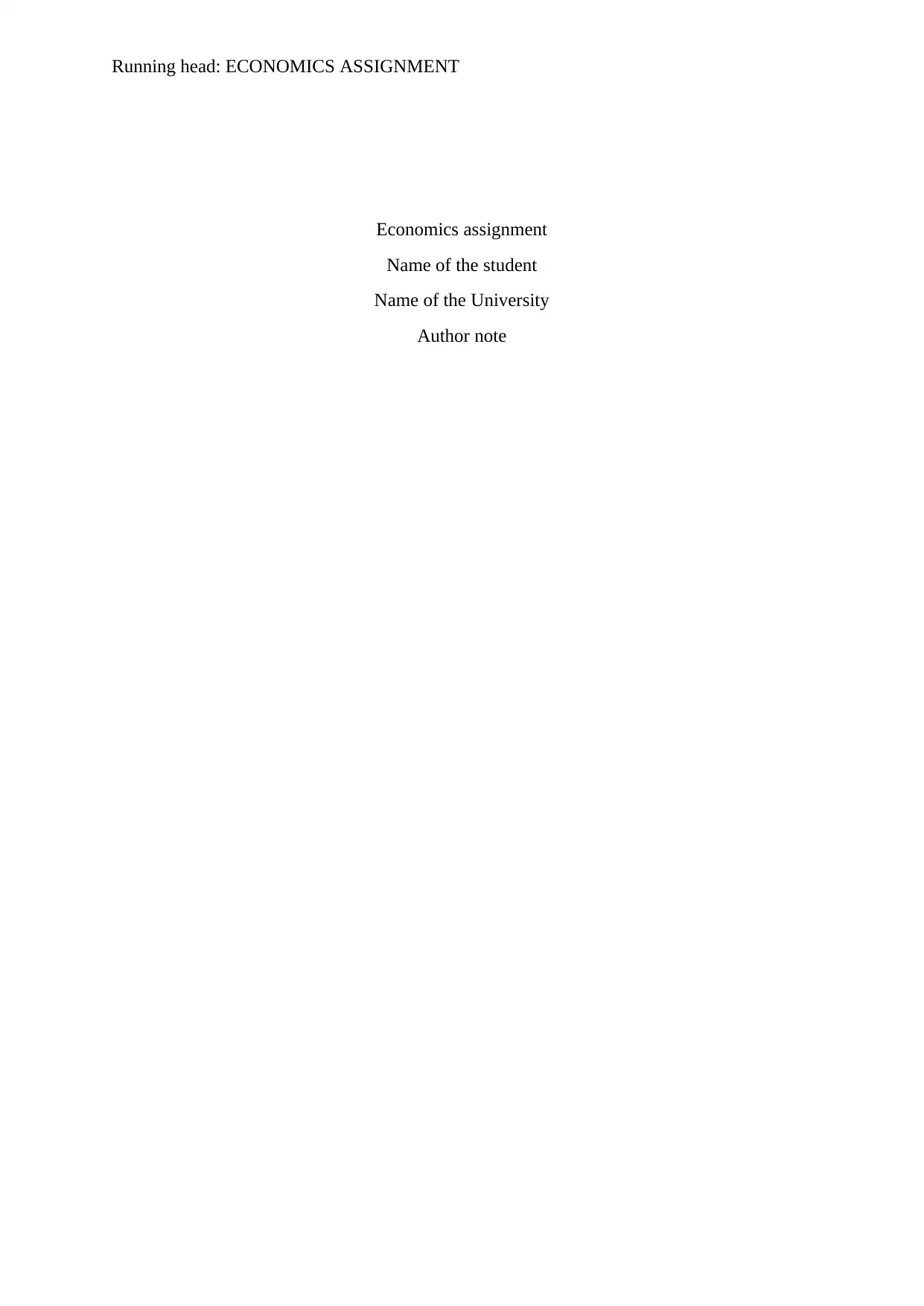
Running head: ECONOMICS ASSIGNMENT
Economics assignment
Name of the student
Name of the University
Author note
Economics assignment
Name of the student
Name of the University
Author note
Paraphrase This Document
Need a fresh take? Get an instant paraphrase of this document with our AI Paraphraser
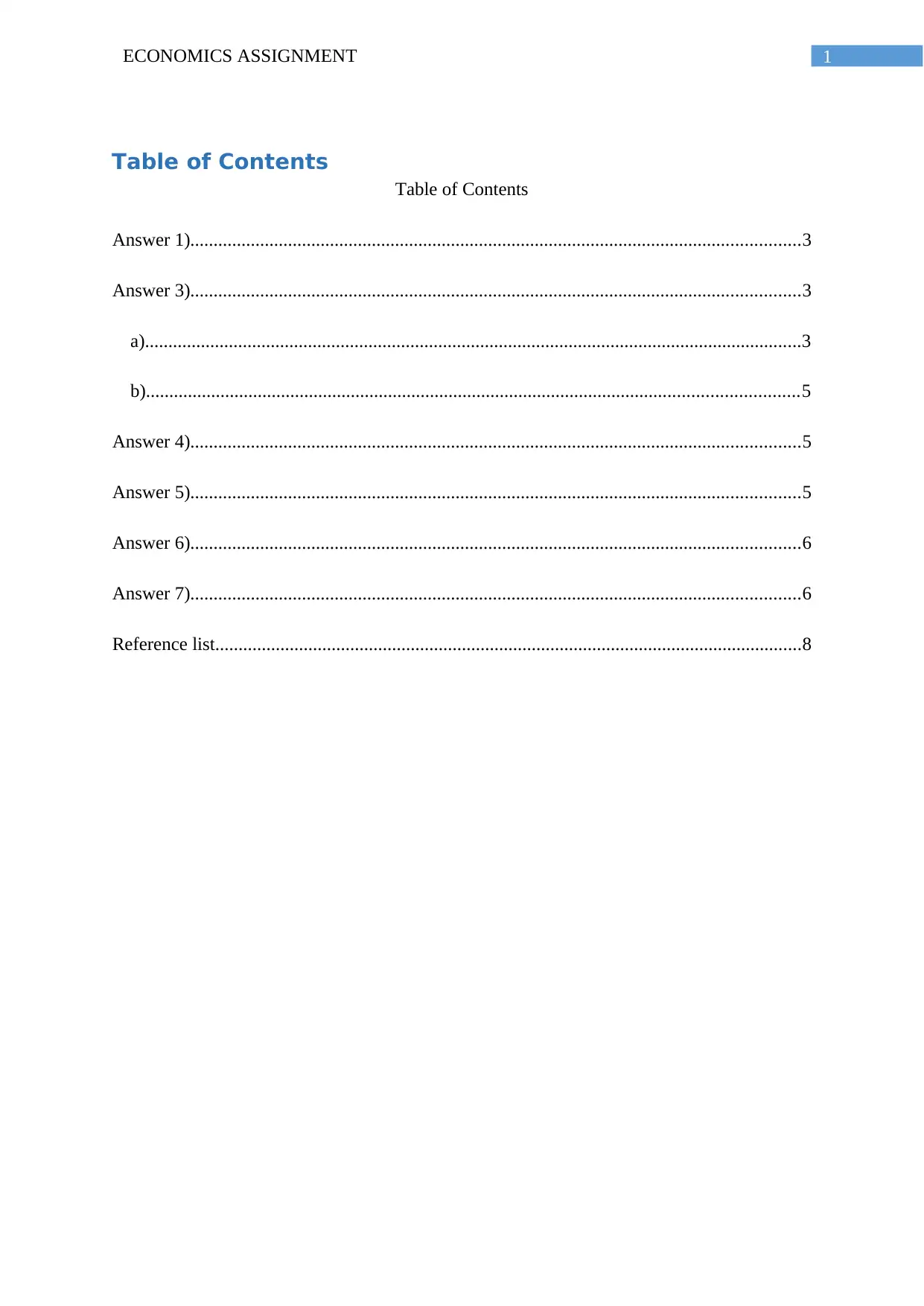
1ECONOMICS ASSIGNMENT
Table of Contents
Table of Contents
Answer 1)...................................................................................................................................3
Answer 3)...................................................................................................................................3
a).............................................................................................................................................3
b)............................................................................................................................................5
Answer 4)...................................................................................................................................5
Answer 5)...................................................................................................................................5
Answer 6)...................................................................................................................................6
Answer 7)...................................................................................................................................6
Reference list..............................................................................................................................8
Table of Contents
Table of Contents
Answer 1)...................................................................................................................................3
Answer 3)...................................................................................................................................3
a).............................................................................................................................................3
b)............................................................................................................................................5
Answer 4)...................................................................................................................................5
Answer 5)...................................................................................................................................5
Answer 6)...................................................................................................................................6
Answer 7)...................................................................................................................................6
Reference list..............................................................................................................................8
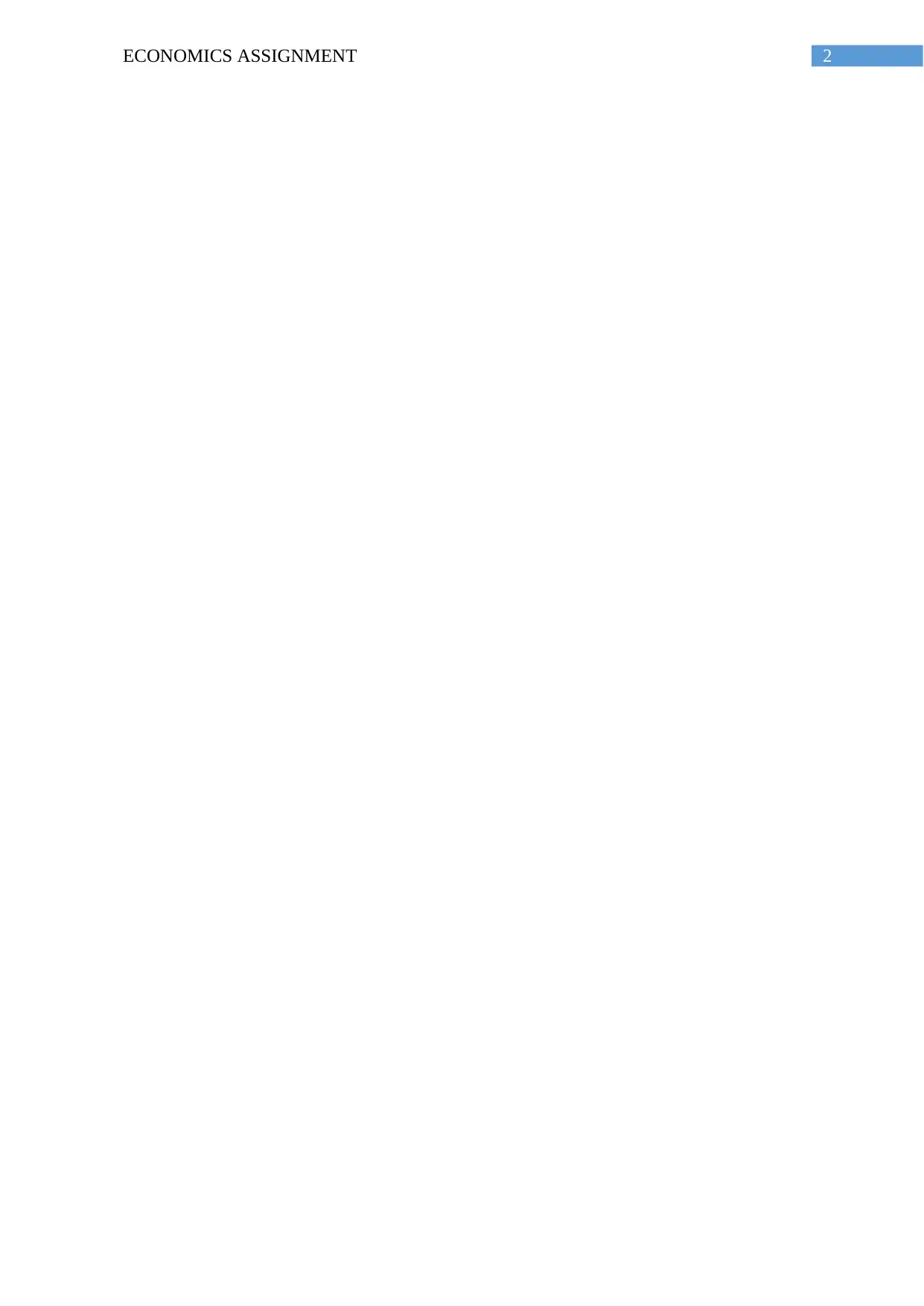
2ECONOMICS ASSIGNMENT
⊘ This is a preview!⊘
Do you want full access?
Subscribe today to unlock all pages.

Trusted by 1+ million students worldwide
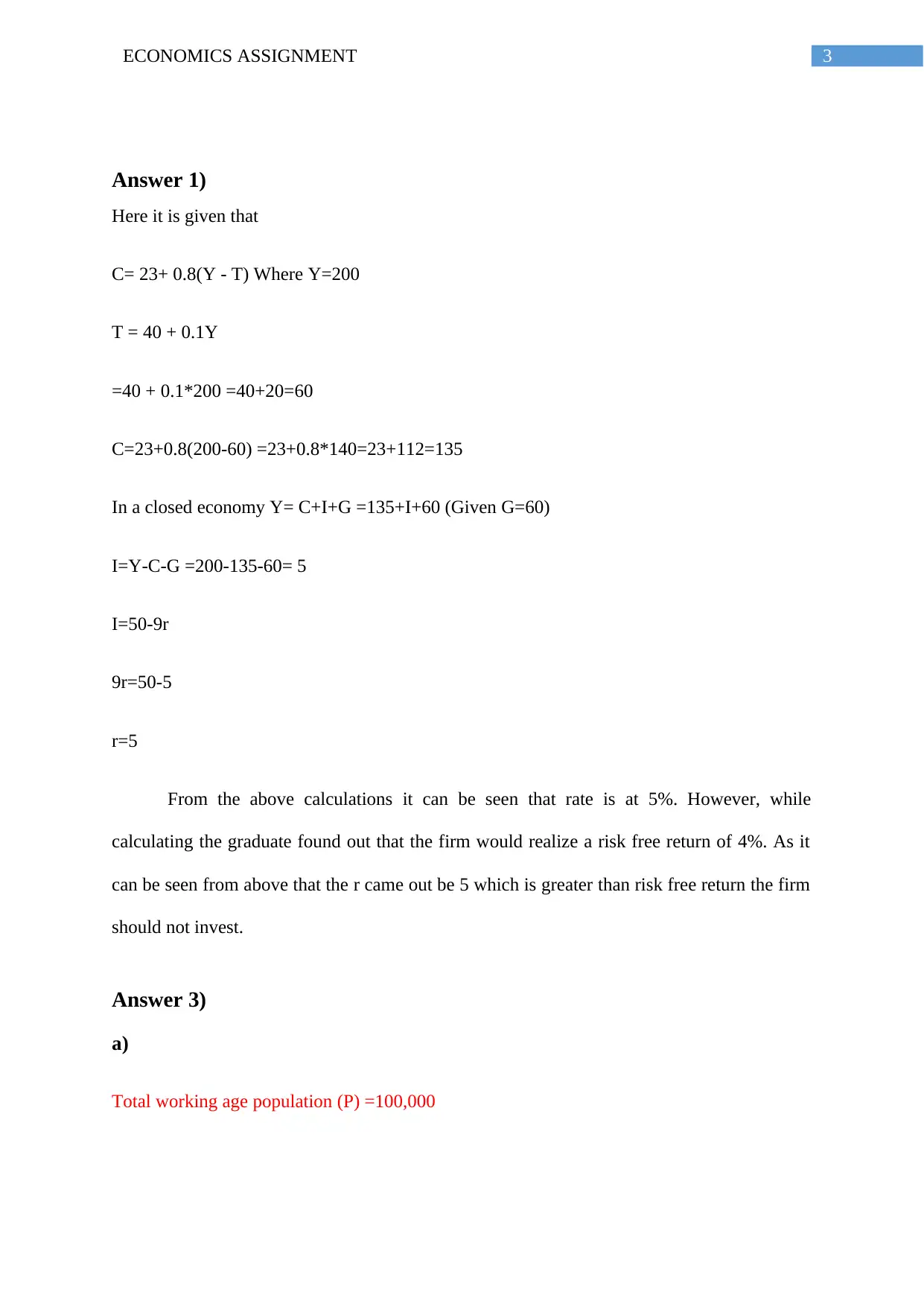
3ECONOMICS ASSIGNMENT
Answer 1)
Here it is given that
C= 23+ 0.8(Y - T) Where Y=200
T = 40 + 0.1Y
=40 + 0.1*200 =40+20=60
C=23+0.8(200-60) =23+0.8*140=23+112=135
In a closed economy Y= C+I+G =135+I+60 (Given G=60)
I=Y-C-G =200-135-60= 5
I=50-9r
9r=50-5
r=5
From the above calculations it can be seen that rate is at 5%. However, while
calculating the graduate found out that the firm would realize a risk free return of 4%. As it
can be seen from above that the r came out be 5 which is greater than risk free return the firm
should not invest.
Answer 3)
a)
Total working age population (P) =100,000
Answer 1)
Here it is given that
C= 23+ 0.8(Y - T) Where Y=200
T = 40 + 0.1Y
=40 + 0.1*200 =40+20=60
C=23+0.8(200-60) =23+0.8*140=23+112=135
In a closed economy Y= C+I+G =135+I+60 (Given G=60)
I=Y-C-G =200-135-60= 5
I=50-9r
9r=50-5
r=5
From the above calculations it can be seen that rate is at 5%. However, while
calculating the graduate found out that the firm would realize a risk free return of 4%. As it
can be seen from above that the r came out be 5 which is greater than risk free return the firm
should not invest.
Answer 3)
a)
Total working age population (P) =100,000
Paraphrase This Document
Need a fresh take? Get an instant paraphrase of this document with our AI Paraphraser
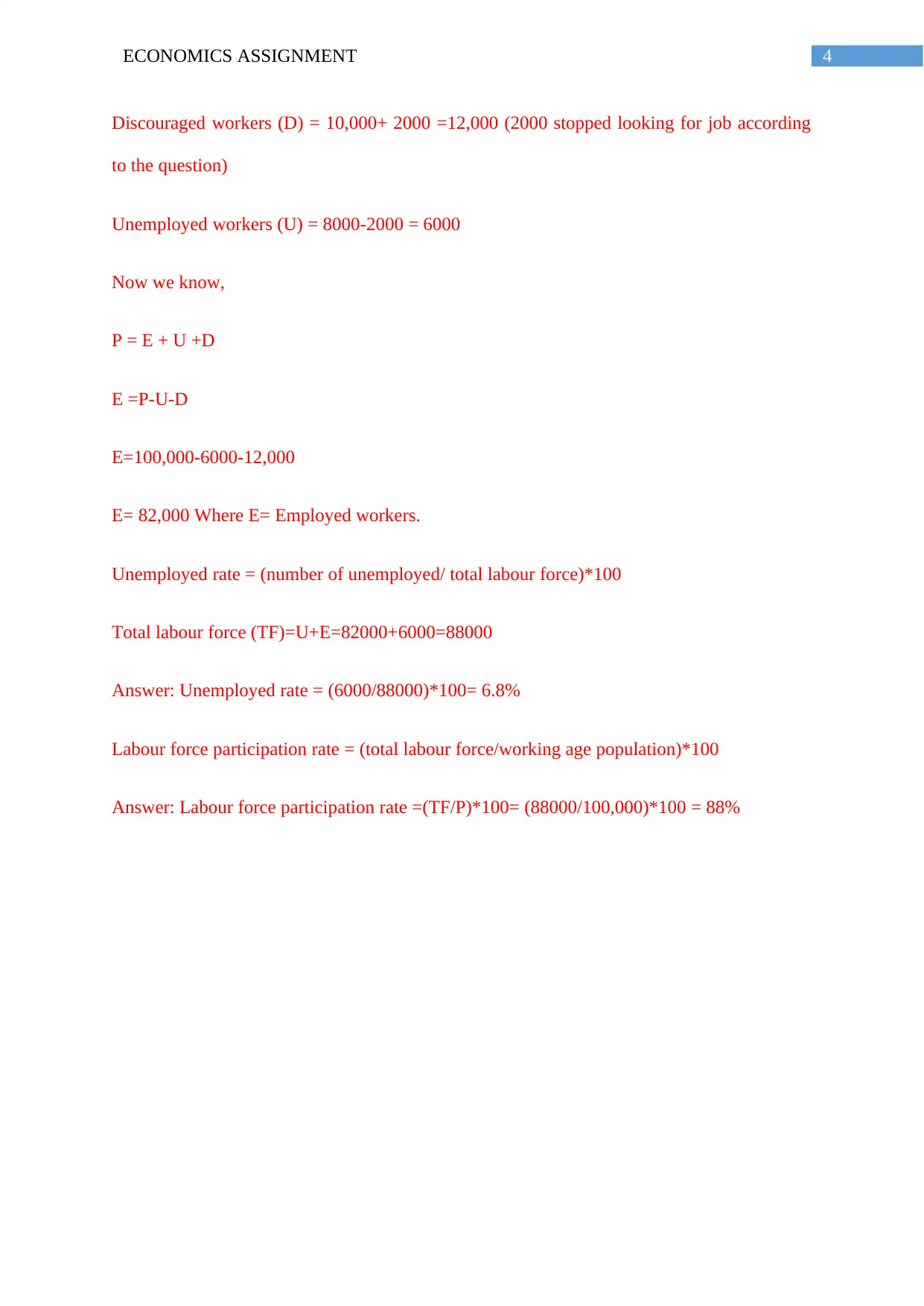
4ECONOMICS ASSIGNMENT
Discouraged workers (D) = 10,000+ 2000 =12,000 (2000 stopped looking for job according
to the question)
Unemployed workers (U) = 8000-2000 = 6000
Now we know,
P = E + U +D
E =P-U-D
E=100,000-6000-12,000
E= 82,000 Where E= Employed workers.
Unemployed rate = (number of unemployed/ total labour force)*100
Total labour force (TF)=U+E=82000+6000=88000
Answer: Unemployed rate = (6000/88000)*100= 6.8%
Labour force participation rate = (total labour force/working age population)*100
Answer: Labour force participation rate =(TF/P)*100= (88000/100,000)*100 = 88%
Discouraged workers (D) = 10,000+ 2000 =12,000 (2000 stopped looking for job according
to the question)
Unemployed workers (U) = 8000-2000 = 6000
Now we know,
P = E + U +D
E =P-U-D
E=100,000-6000-12,000
E= 82,000 Where E= Employed workers.
Unemployed rate = (number of unemployed/ total labour force)*100
Total labour force (TF)=U+E=82000+6000=88000
Answer: Unemployed rate = (6000/88000)*100= 6.8%
Labour force participation rate = (total labour force/working age population)*100
Answer: Labour force participation rate =(TF/P)*100= (88000/100,000)*100 = 88%
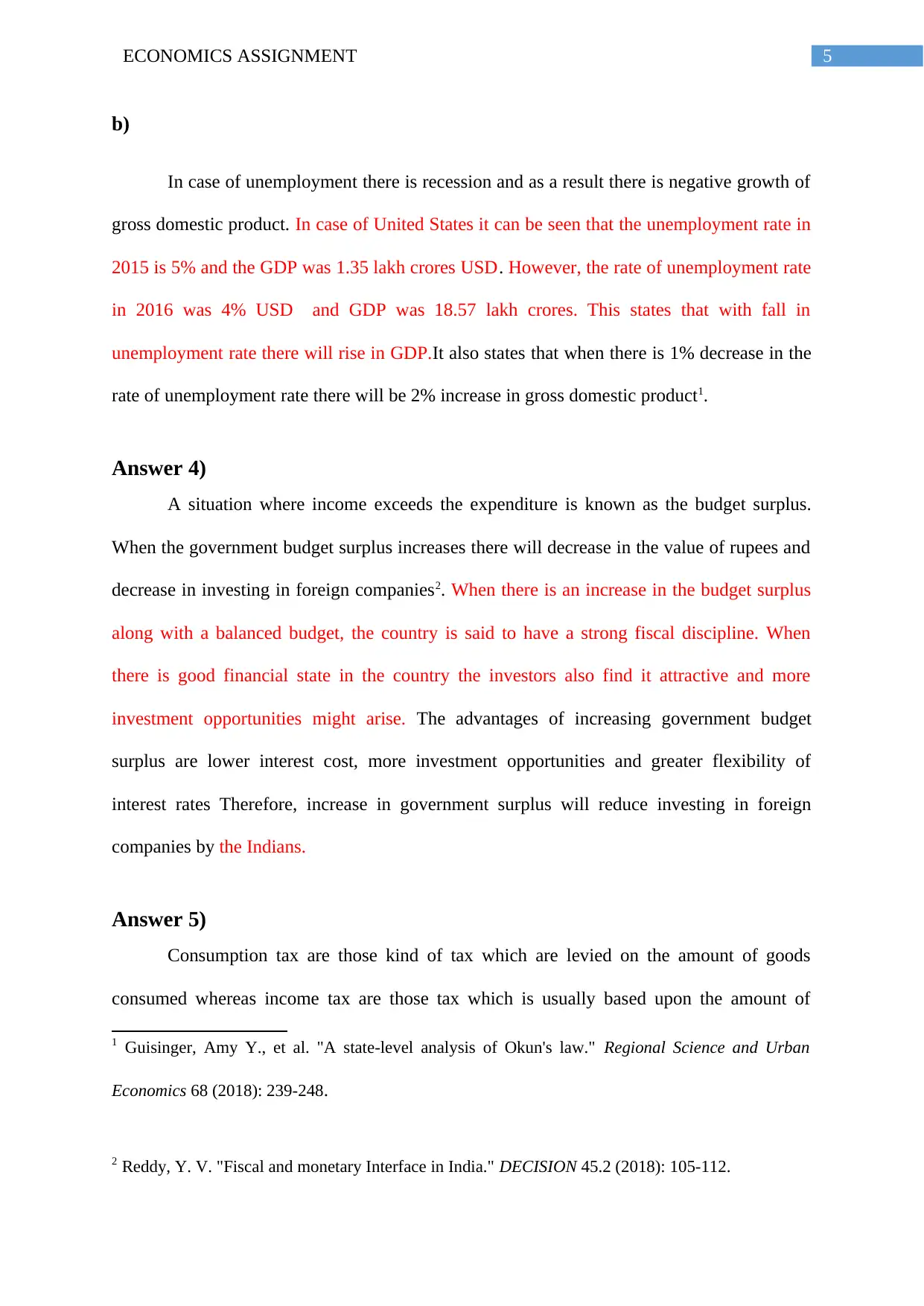
5ECONOMICS ASSIGNMENT
b)
In case of unemployment there is recession and as a result there is negative growth of
gross domestic product. In case of United States it can be seen that the unemployment rate in
2015 is 5% and the GDP was 1.35 lakh crores USD. However, the rate of unemployment rate
in 2016 was 4% USD and GDP was 18.57 lakh crores. This states that with fall in
unemployment rate there will rise in GDP.It also states that when there is 1% decrease in the
rate of unemployment rate there will be 2% increase in gross domestic product1.
Answer 4)
A situation where income exceeds the expenditure is known as the budget surplus.
When the government budget surplus increases there will decrease in the value of rupees and
decrease in investing in foreign companies2. When there is an increase in the budget surplus
along with a balanced budget, the country is said to have a strong fiscal discipline. When
there is good financial state in the country the investors also find it attractive and more
investment opportunities might arise. The advantages of increasing government budget
surplus are lower interest cost, more investment opportunities and greater flexibility of
interest rates Therefore, increase in government surplus will reduce investing in foreign
companies by the Indians.
Answer 5)
Consumption tax are those kind of tax which are levied on the amount of goods
consumed whereas income tax are those tax which is usually based upon the amount of
1 Guisinger, Amy Y., et al. "A state-level analysis of Okun's law." Regional Science and Urban
Economics 68 (2018): 239-248.
2 Reddy, Y. V. "Fiscal and monetary Interface in India." DECISION 45.2 (2018): 105-112.
b)
In case of unemployment there is recession and as a result there is negative growth of
gross domestic product. In case of United States it can be seen that the unemployment rate in
2015 is 5% and the GDP was 1.35 lakh crores USD. However, the rate of unemployment rate
in 2016 was 4% USD and GDP was 18.57 lakh crores. This states that with fall in
unemployment rate there will rise in GDP.It also states that when there is 1% decrease in the
rate of unemployment rate there will be 2% increase in gross domestic product1.
Answer 4)
A situation where income exceeds the expenditure is known as the budget surplus.
When the government budget surplus increases there will decrease in the value of rupees and
decrease in investing in foreign companies2. When there is an increase in the budget surplus
along with a balanced budget, the country is said to have a strong fiscal discipline. When
there is good financial state in the country the investors also find it attractive and more
investment opportunities might arise. The advantages of increasing government budget
surplus are lower interest cost, more investment opportunities and greater flexibility of
interest rates Therefore, increase in government surplus will reduce investing in foreign
companies by the Indians.
Answer 5)
Consumption tax are those kind of tax which are levied on the amount of goods
consumed whereas income tax are those tax which is usually based upon the amount of
1 Guisinger, Amy Y., et al. "A state-level analysis of Okun's law." Regional Science and Urban
Economics 68 (2018): 239-248.
2 Reddy, Y. V. "Fiscal and monetary Interface in India." DECISION 45.2 (2018): 105-112.
⊘ This is a preview!⊘
Do you want full access?
Subscribe today to unlock all pages.

Trusted by 1+ million students worldwide
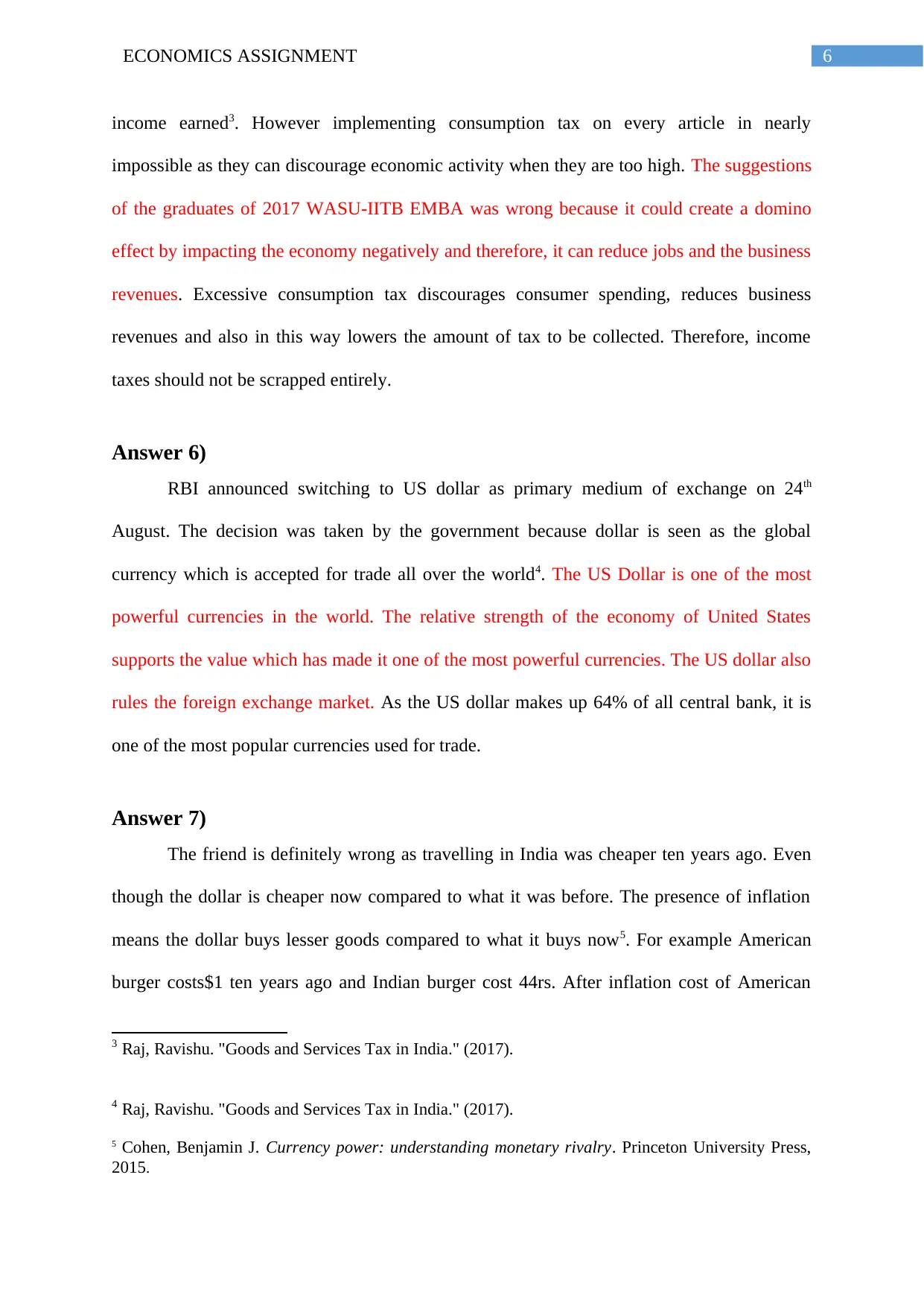
6ECONOMICS ASSIGNMENT
income earned3. However implementing consumption tax on every article in nearly
impossible as they can discourage economic activity when they are too high. The suggestions
of the graduates of 2017 WASU-IITB EMBA was wrong because it could create a domino
effect by impacting the economy negatively and therefore, it can reduce jobs and the business
revenues. Excessive consumption tax discourages consumer spending, reduces business
revenues and also in this way lowers the amount of tax to be collected. Therefore, income
taxes should not be scrapped entirely.
Answer 6)
RBI announced switching to US dollar as primary medium of exchange on 24th
August. The decision was taken by the government because dollar is seen as the global
currency which is accepted for trade all over the world4. The US Dollar is one of the most
powerful currencies in the world. The relative strength of the economy of United States
supports the value which has made it one of the most powerful currencies. The US dollar also
rules the foreign exchange market. As the US dollar makes up 64% of all central bank, it is
one of the most popular currencies used for trade.
Answer 7)
The friend is definitely wrong as travelling in India was cheaper ten years ago. Even
though the dollar is cheaper now compared to what it was before. The presence of inflation
means the dollar buys lesser goods compared to what it buys now5. For example American
burger costs$1 ten years ago and Indian burger cost 44rs. After inflation cost of American
3 Raj, Ravishu. "Goods and Services Tax in India." (2017).
4 Raj, Ravishu. "Goods and Services Tax in India." (2017).
5 Cohen, Benjamin J. Currency power: understanding monetary rivalry. Princeton University Press,
2015.
income earned3. However implementing consumption tax on every article in nearly
impossible as they can discourage economic activity when they are too high. The suggestions
of the graduates of 2017 WASU-IITB EMBA was wrong because it could create a domino
effect by impacting the economy negatively and therefore, it can reduce jobs and the business
revenues. Excessive consumption tax discourages consumer spending, reduces business
revenues and also in this way lowers the amount of tax to be collected. Therefore, income
taxes should not be scrapped entirely.
Answer 6)
RBI announced switching to US dollar as primary medium of exchange on 24th
August. The decision was taken by the government because dollar is seen as the global
currency which is accepted for trade all over the world4. The US Dollar is one of the most
powerful currencies in the world. The relative strength of the economy of United States
supports the value which has made it one of the most powerful currencies. The US dollar also
rules the foreign exchange market. As the US dollar makes up 64% of all central bank, it is
one of the most popular currencies used for trade.
Answer 7)
The friend is definitely wrong as travelling in India was cheaper ten years ago. Even
though the dollar is cheaper now compared to what it was before. The presence of inflation
means the dollar buys lesser goods compared to what it buys now5. For example American
burger costs$1 ten years ago and Indian burger cost 44rs. After inflation cost of American
3 Raj, Ravishu. "Goods and Services Tax in India." (2017).
4 Raj, Ravishu. "Goods and Services Tax in India." (2017).
5 Cohen, Benjamin J. Currency power: understanding monetary rivalry. Princeton University Press,
2015.
Paraphrase This Document
Need a fresh take? Get an instant paraphrase of this document with our AI Paraphraser
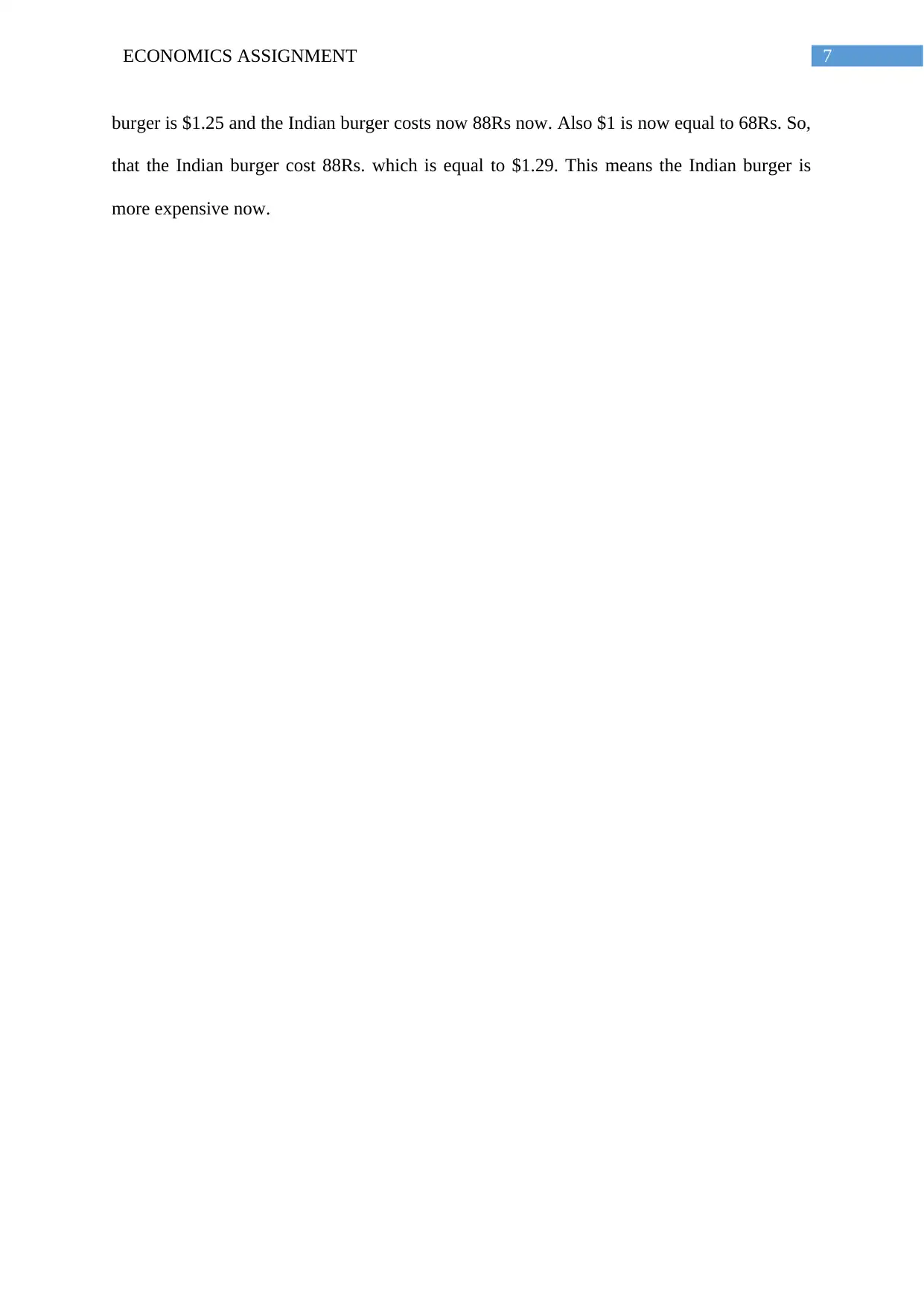
7ECONOMICS ASSIGNMENT
burger is $1.25 and the Indian burger costs now 88Rs now. Also $1 is now equal to 68Rs. So,
that the Indian burger cost 88Rs. which is equal to $1.29. This means the Indian burger is
more expensive now.
burger is $1.25 and the Indian burger costs now 88Rs now. Also $1 is now equal to 68Rs. So,
that the Indian burger cost 88Rs. which is equal to $1.29. This means the Indian burger is
more expensive now.
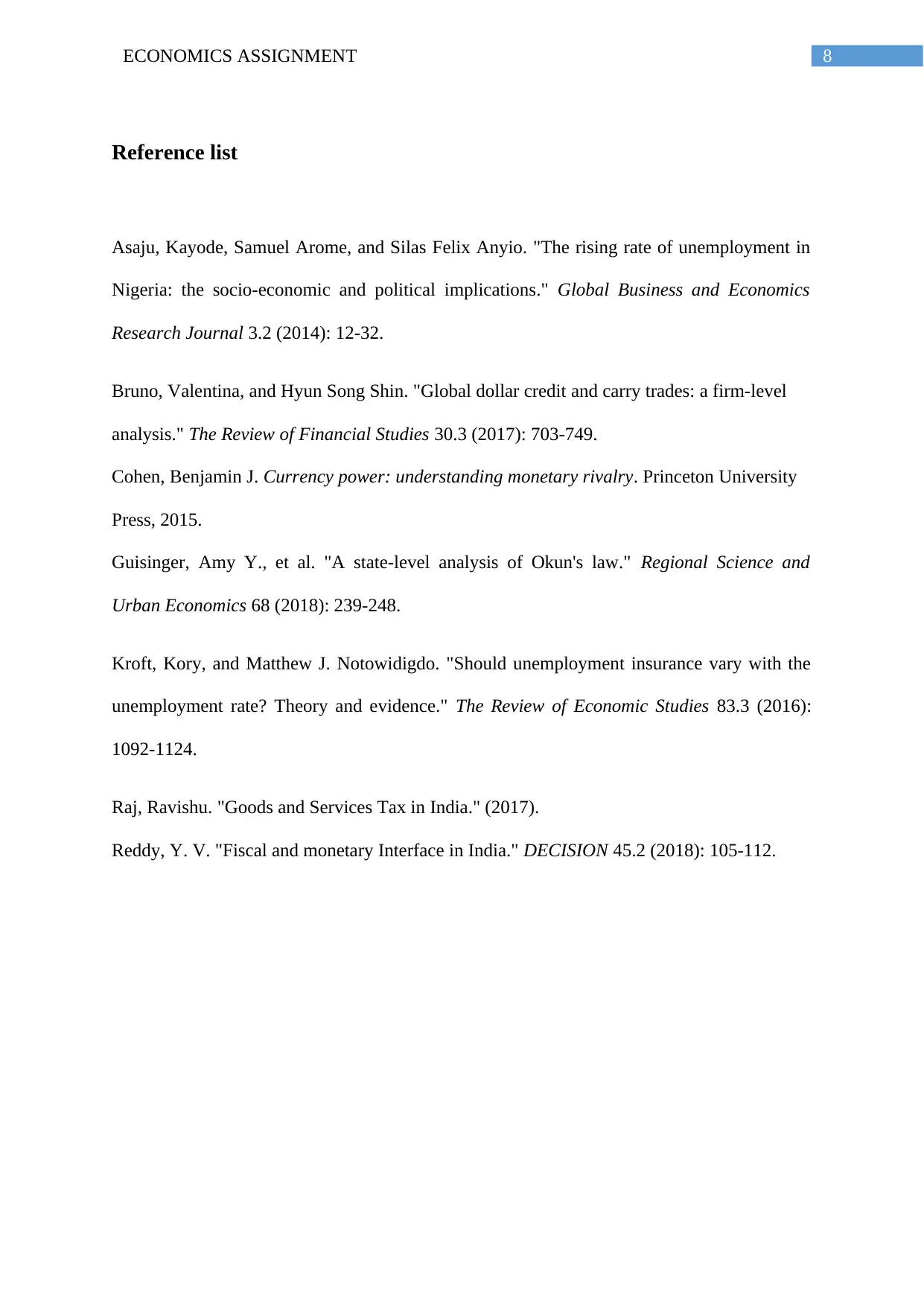
8ECONOMICS ASSIGNMENT
Reference list
Asaju, Kayode, Samuel Arome, and Silas Felix Anyio. "The rising rate of unemployment in
Nigeria: the socio-economic and political implications." Global Business and Economics
Research Journal 3.2 (2014): 12-32.
Bruno, Valentina, and Hyun Song Shin. "Global dollar credit and carry trades: a firm-level
analysis." The Review of Financial Studies 30.3 (2017): 703-749.
Cohen, Benjamin J. Currency power: understanding monetary rivalry. Princeton University
Press, 2015.
Guisinger, Amy Y., et al. "A state-level analysis of Okun's law." Regional Science and
Urban Economics 68 (2018): 239-248.
Kroft, Kory, and Matthew J. Notowidigdo. "Should unemployment insurance vary with the
unemployment rate? Theory and evidence." The Review of Economic Studies 83.3 (2016):
1092-1124.
Raj, Ravishu. "Goods and Services Tax in India." (2017).
Reddy, Y. V. "Fiscal and monetary Interface in India." DECISION 45.2 (2018): 105-112.
Reference list
Asaju, Kayode, Samuel Arome, and Silas Felix Anyio. "The rising rate of unemployment in
Nigeria: the socio-economic and political implications." Global Business and Economics
Research Journal 3.2 (2014): 12-32.
Bruno, Valentina, and Hyun Song Shin. "Global dollar credit and carry trades: a firm-level
analysis." The Review of Financial Studies 30.3 (2017): 703-749.
Cohen, Benjamin J. Currency power: understanding monetary rivalry. Princeton University
Press, 2015.
Guisinger, Amy Y., et al. "A state-level analysis of Okun's law." Regional Science and
Urban Economics 68 (2018): 239-248.
Kroft, Kory, and Matthew J. Notowidigdo. "Should unemployment insurance vary with the
unemployment rate? Theory and evidence." The Review of Economic Studies 83.3 (2016):
1092-1124.
Raj, Ravishu. "Goods and Services Tax in India." (2017).
Reddy, Y. V. "Fiscal and monetary Interface in India." DECISION 45.2 (2018): 105-112.
⊘ This is a preview!⊘
Do you want full access?
Subscribe today to unlock all pages.

Trusted by 1+ million students worldwide
1 out of 9
Your All-in-One AI-Powered Toolkit for Academic Success.
+13062052269
info@desklib.com
Available 24*7 on WhatsApp / Email
![[object Object]](/_next/static/media/star-bottom.7253800d.svg)
Unlock your academic potential
Copyright © 2020–2025 A2Z Services. All Rights Reserved. Developed and managed by ZUCOL.